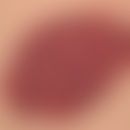Hierfür ist eine Anmeldung erforderlich. Bitte registrieren Sie sich bei uns oder melden Sie sich mit Ihren Zugangsdaten an.
HistoryThis section has been translated automatically.
Tripe, 1845
DefinitionThis section has been translated automatically.
A painful, permanent erection without sexual arousal that goes beyond a prolonged erection, cannot be influenced arbitrarily and lasts from several hours to days. There is a complete venous outflow blockage of the erectile tissue (corpora cavernosa) due to permanently relaxed erectile tissue muscles with oxygen deficiency andexcess CO2.
Notice! After 8-12 hours there is a risk of consecutive erectile tissue fibrosis!
You might also be interested in
EtiopathogenesisThis section has been translated automatically.
Various causes have been described: Idiopathic (35-70%), after SKAT/tumescent autoinjection therapy (autoinjection therapy with vasoactive drugs), drug-induced (especially psychotropic drugs), after drugs and alcohol, posttraumatic.
TherapyThis section has been translated automatically.
- Cooperation with the urologist. Multiple puncture of the erectile tissue with large cannula under sterile conditions (drainage of 50-200 ml stasis blood), heparin injection (2500 E per erectile tissue in physiological NaCl solution).
- Alpha-Sympathomimetics: Or Effortil 10-30 mg p.o. (at the onset of blood pressure rise 10-20 mg Adalat p.o.). Cave! Hypertonic crisis!
- Operative relief (removal and shunt surgery). Therapy of the underlying disease.
LiteratureThis section has been translated automatically.
- Maan Z et al (2003) Priapism--a review of the medical management. Expert Opinion Pharmacother 4: 2271-2277
- Meineke V et al (2003) Malignant priapism as a sign of a recurrent prostate cancer. Differential diagnosis of induratio penis plastica. dermatologist 54: 541-543
- Schneede P et al (1999) Partial priapism. Case report and review of the literature of diagnostic and therapeutic measures. Urologist A 38: 179-183
- Tripe JW (1845) Case of Priapism. Lancet 2: 8
Incoming links (3)
Erection, prolonged; Penile vein thrombosis; Skat/swelling body autoinjection therapy;Disclaimer
Please ask your physician for a reliable diagnosis. This website is only meant as a reference.




